- October 26, 2025
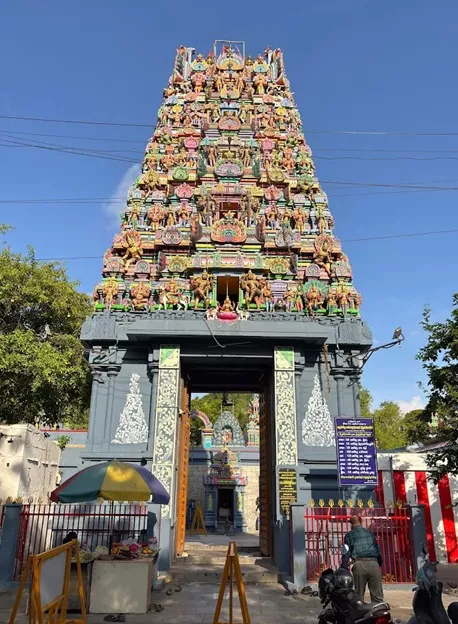
| Sivasthalam Name | Arulmigu Gangadhareswarar Temple |
|---|---|
| Moolavar (Main Deity) | Gangadhareswarar, Vaidheeswarar |
| Amman/Thayar (Consort) | Pangajambaal |
| Sthala Viruksham (Sacred Tree) | Purasu Tree (Butea Monosperma) |
| Theertham (Holy Water) | Ganga Theertham |
| Puranic Name | Purasuvanam, Purasawalkam |
| Town/Place | Purasawalkam |
| District | Chennai |
Thennādudaiya Sivanē Pōtri
Ennāttavarkkum Iraivā Pōtri

Arulmigu Pangajambaal Ambal Sametha Gangadhareswarar Temple, located in the city of Chennai, Tamil Nadu, is one of the ancient centers of the Saivite tradition. This temple, which houses a self-manifested (Swayambu) Shivalingam, is renowned as a Vaipputhalam (a site mentioned incidentally in the verses) sung by Sundarar, and as an Aabathalam (water element temple) among the Pancha Bootha Sthalams (five element temples) of Chennai, representing Water. The structure of the temple is reminiscent of the Pallava period.
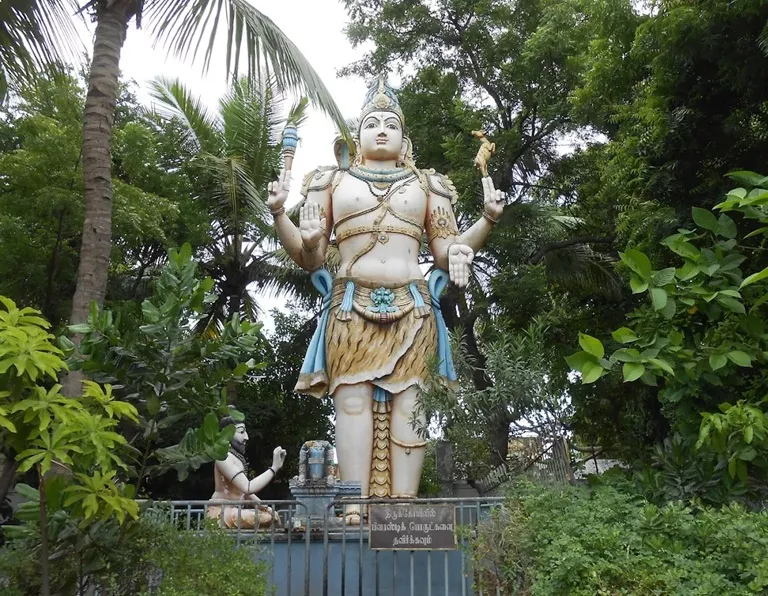
In Puranic times, this area was a forest dense with Purasu trees and was thus called “Purasuvanam,” which later evolved into “Purasawalkam.” The temple is approximately 650 years old. Inscriptions from the later Chola period (12th century) and the Vijayanagara period (15th–16th century) are found here.
A 13th-century inscription records a donation made by Neelagangaraiyan for lighting a lamp for Ulagaludaiya Nayanaar of Thiruvanmiyur, in Puliyur Naadu, Jayankonda Chola Mandalam.
A 15th-century inscription mentions the name of Sri Veerappirathapa Devarayar Maha Rayar.
16th-century inscriptions mention contributions by figures like Kongon Alagapperumal regarding lighting lamps, settling residents, and matters of tax and offerings (kanikkai).
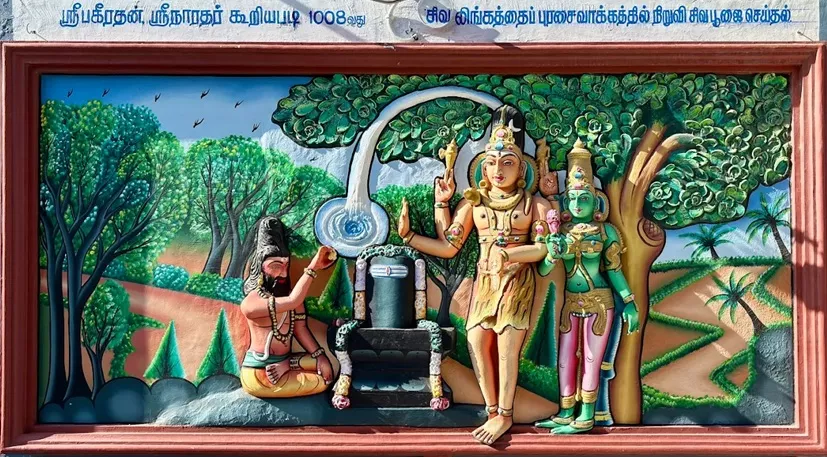
The Legend of King Sagara and Bhagiratha: When King Sagara of the Surya dynasty performed the Ashwamedha Yaga (Horse Sacrifice), Indra stole the ritual horse and tied it up at the ashram of Sage Kapila in the netherworld (Paathaala Lokam). When Sagara’s 60,000 sons searched for the horse and attacked Kapila, the sage turned them into ashes with his ascetic power. Sagara’s grandson Amshuman, his son Dilipa, and finally his great-grandson Bhagiratha performed severe penance to bring the Ganga river to Earth for the salvation of the 60,000 souls. With Lord Shiva’s grace, the Ganga descended. To bear its immense force, Shiva contained it in his matted locks and released it slowly. On its way to the netherworld, a few drops of the Ganga fell here, creating the Ganga Theertham.
The Second Legend: Another story relates that Bhagiratha was cursed for insulting Sage Narada. To seek atonement (relief from the curse), he carved and installed 1008 Shivalingams. The last Lingam, which he installed here under a Purasu tree, is the presiding deity of this temple. Due to the association with the Ganga, the Lord is called Gangadhareswarar (the one who bears the Ganga).
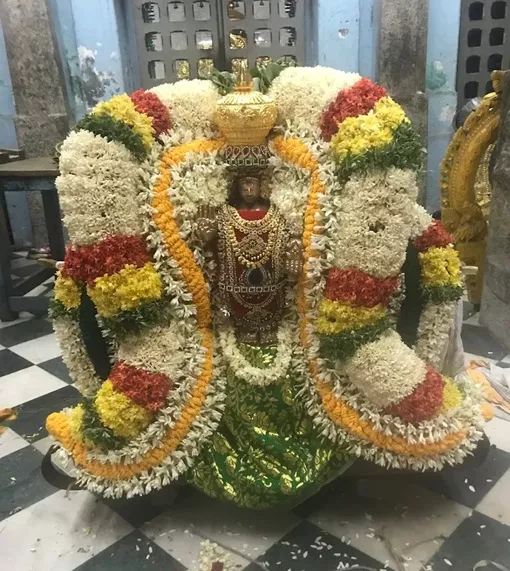
The temple faces East and has a 5-tiered Rajagopuram (main tower). Inside are the Dwajasthambam (flagpole), Balipeetam (sacrificial altar), and Rishabam (Nandi bull). The Garbhagriha (Sanctum Sanctorum) is square-shaped, followed by the Ardha Mandapam, and a Maha Mandapam with pillars. The Vimana (tower over the sanctum) is adorned with stucco sculptures.
Koshtam Deities: Vinayagar, Dakshinamurthy, Mahavishnu, Brahma, and Durga.
The Amman (Pangajambaal) Shrine faces South.
Inner Prakaram (Circumambulatory Path): Shrines for Naalvar (four Saivite Saints), Maha Ganapathi, Nagar (serpents), Kasi Viswanathar, Sekkizhar, Kulachirai Nayanar, Surya (Sun), Chandra (Moon), Valli Deivanai Subrahmanyar, Oondreeswarar, Minnoli Ammai, Shanmukhar, Durga, Bhairavar, Palliyarai (resting chamber), and Natarajar Sabhai (hall).
Outer Prakaram: Utsavar Mandapam (with the 63 Nayanmars), Siddhi Vinayagar, Vaidheeswarar, Balasubramaniyar, Kurunda Mallieswarar, Simha Vahanam (Lion Mount), Sathyanarayanar, Bana Lingam, Yagasalai (sacrificial hall), Navagraham (nine planets), and Ramalinga Vallalar.
Sculptures on the Outer Walls depict Shiva Leelas (Divine Plays): Ananda Thandavam (Blissful Dance), Kicking Yama, Tripura Samharam (Destroying the Three Cities), Ravana Lifting Kailash, and Darshan (vision) given to Karaikkal Ammaiyar.
Other Sculptures: Bhagiratha insulting Narada, Shiva worship, and Shiva releasing the Ganga from his matted locks. There is a temple tank in the Southeast corner.
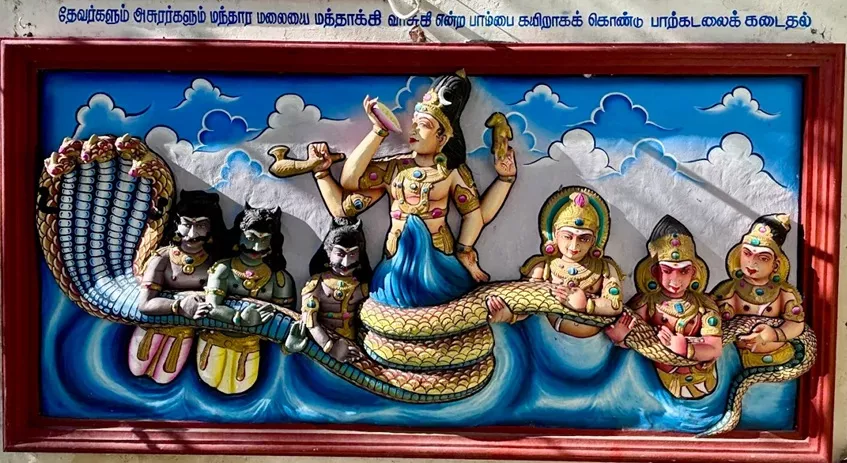
This temple is known as the Aabathalam, representing Water, among the Pancha Bootha Sthalams of Chennai:
Arunachaleswarar (Fire – Sowcarpet)
Ekambareswarar (Earth – Sowcarpet)
Kalahastheeswarar (Air – Paris)
Chidambareswarar (Space/Akash – Choolai)
Gangadhareswarar (Water – Purasawalkam)
Special Features: Shrines for Manonmani Lingam, Uchchishta Ganapathi, Sathyanarayanar, and Vallalar Ramalinga Adigal.
The temple complex features a rare Kurunda tree, under which Manikkavasagar is believed to have received spiritual instruction.
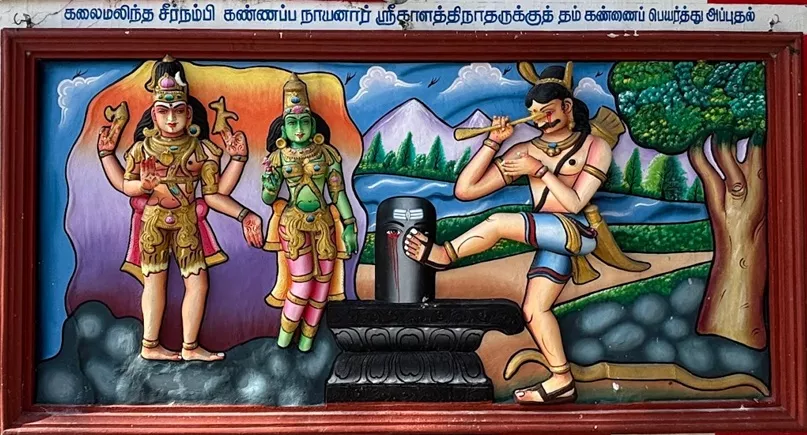
Maha Shivaratri (which includes the Bhagiratha Festival)
Margazhi Thiruvathirai
Special worship services are held on Pradosham days and other festive occasions.
Arulmigu Gangadhareswarar Temple is open from 06:00 AM to 11:30 AM and from 04:30 PM to 09:00 PM.
From Chennai Central Railway Station: Approximately 2 km away, reachable via Gandhi Irwin Road – Nair Road – Dr. Alagappa Chettiar Road – Gangadheeswarar Kovil Road.
From Egmore Railway Station: Approximately 2 km away.
Buses are available from Purasawalkam and Egmore bus terminals.
Arulmigu Gangadhareswarar Temple, Purasawalkam, Chennai – 600084.
Contact Number: 📞 +91-44-26422487